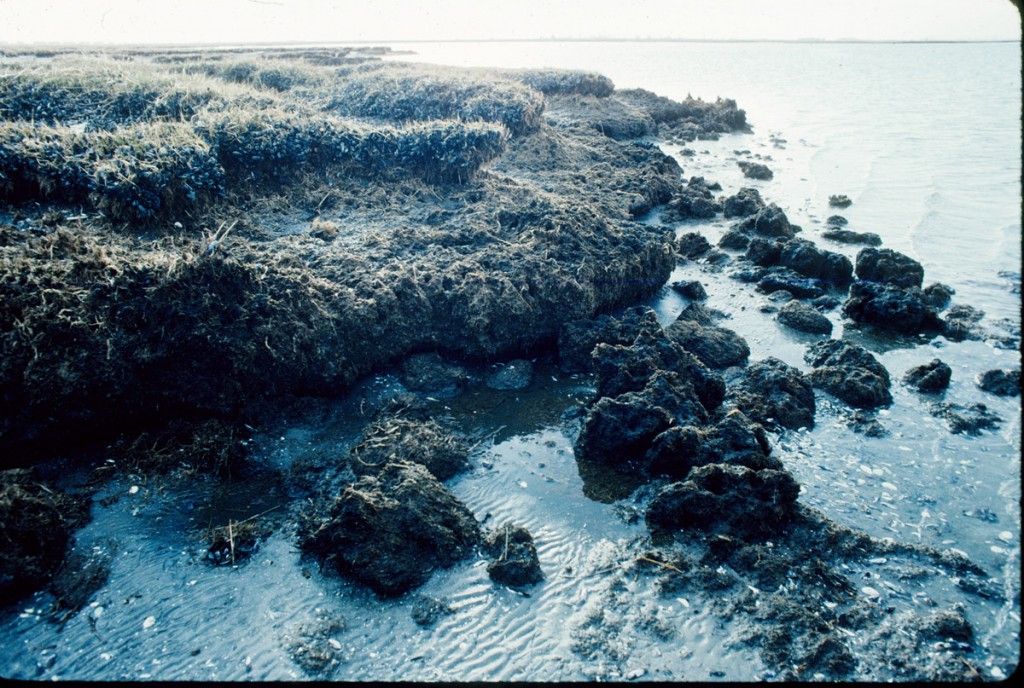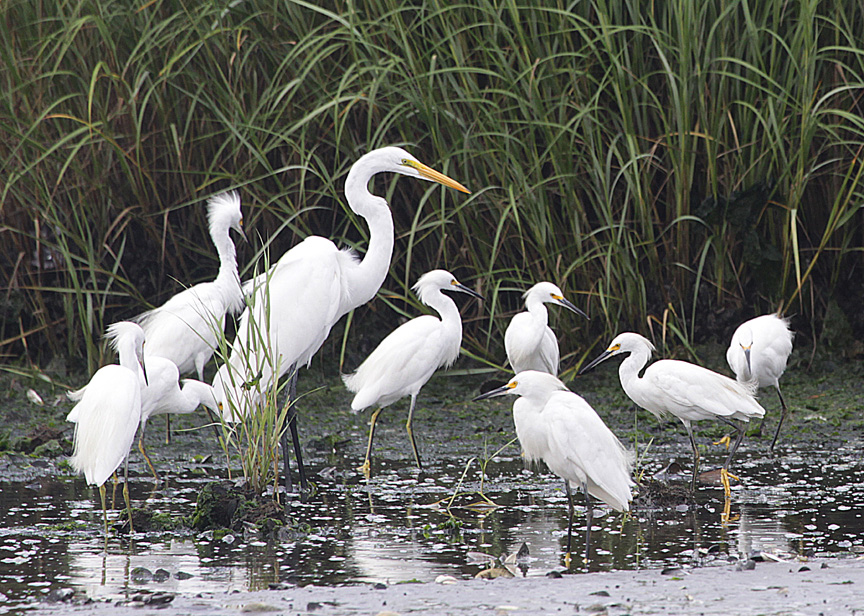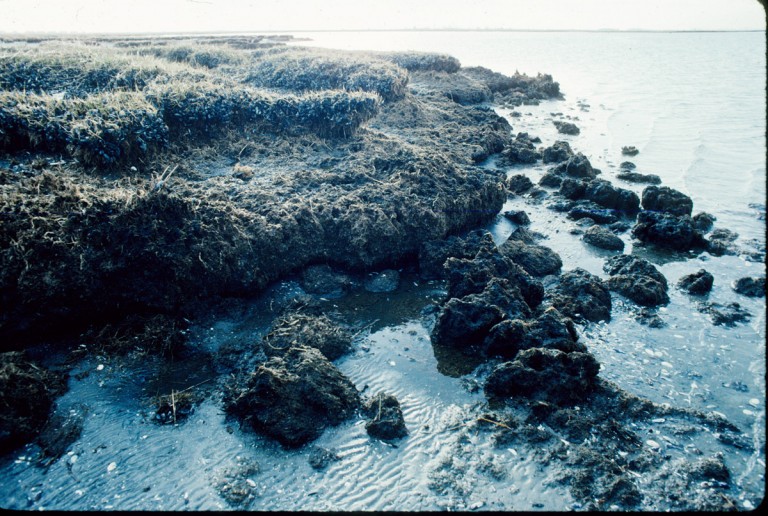 Spreading across Brooklyn and Queens, Jamaica Bay was once twice its current size—a salt marsh full of thriving wildlife. Decades of sewage runoff and increasing levels of nitrogen, which cause “dead zones” in the bay, have forced wildlife to compete for less and less livable space.
Spreading across Brooklyn and Queens, Jamaica Bay was once twice its current size—a salt marsh full of thriving wildlife. Decades of sewage runoff and increasing levels of nitrogen, which cause “dead zones” in the bay, have forced wildlife to compete for less and less livable space.
Several environmental groups struck an agreement with the city that would reclaim the bay as a wildlife sanctuary in February last year. Last week, that agreement was finalized with the city Department of Environmental Protection (DEP) and the state Department of Environmental Conservation (DEC). According to the DEC, it will significantly improve the water quality and habitat of Jamaica Bay.
The agreement centers on upgrading wastewater treatment plants to lower nitrogen levels in the bay.
“This agreement will be the turning point where the bay is placed squarely on the path to recovery,” said DEC Commissioner Joe Martens. He added that thanks to strong governmental partnerships, “we’re able to give the citizens of New York the water quality and the water environment they deserve.”
At the forefront of the effort to restore the bay were several environmental groups, including the Natural Resources Defense Council, the Jamaica Bay Eco-watchers, NY/NJ Baykeeper and the American Littoral Society.
“This agreement will greatly improve water quality and enhance habitat by reducing the amount of nitrogen coming into the bay which, we believe, is a probable major source of marsh dieback,” said Don Riepe, of the American Littoral Society.
 The bay hosts a variety of environments—salt marshes, grasslands, coastal woodlands, maritime shrub lands, and brackish and freshwater wetlands—that are all threatened by excess nitrogen. Nutrient nitrogen in salt water ecosystems contributes to the growth of algae and decreases oxygen levels in the water, creating dead zones where fish suffocate. Nitrogen also contributes to noxious odors and sludge—not only off-putting to residents and tourists, but harmful to the more than 325 types of birds that live and visit the bay.
The bay hosts a variety of environments—salt marshes, grasslands, coastal woodlands, maritime shrub lands, and brackish and freshwater wetlands—that are all threatened by excess nitrogen. Nutrient nitrogen in salt water ecosystems contributes to the growth of algae and decreases oxygen levels in the water, creating dead zones where fish suffocate. Nitrogen also contributes to noxious odors and sludge—not only off-putting to residents and tourists, but harmful to the more than 325 types of birds that live and visit the bay.
Riepe said that the increased nitrogen entering the bay has countless impacts ranging from the impact of sparse fish supplies (he said a number of people depend on catches for subsistence) to the increased chance of flooding and storm damage in the area.
“The bay has an economic value, but it also has great ecological value,” he said. “The marshes act as a buffer to storms. Without the marshes, the homes in Broad Channel and Howard Beach are susceptible to big waves.”
Nitrogen isn’t just harming wildlife, it’s degrading the entire ecosystem, Riepe said.
According to the DEC, ninety percent of the nitrogen going into the bay comes from municipal sewage treatment plants.
In accordance with the agreements, the city will complete upgrades to its four wastewater treatment facilities that discharge into the bay (Coney Island, 26th Ward, Rockaway and Jamaica) by 2020. The upgrades are expected to reduce the daily amount of nitrogen discharge by roughly 20,000 pounds—50 percent of the nitrogen currently entering the bay. “Milestone” goals are segmented in the plan, to occur incrementally in the preceding years.
Those involved in the process have touted the effectiveness of civic groups and city and state departments working in collaboration.
“This historic agreement is a model for showcasing how all stakeholders can come together to achieve the common goal of saving this unique estuary,” Dan Mundy, Sr., of the Jamaica Bay Ecowatchers said.
Chris Len, NY/NJ Baykeeper staff attorney, added, “This shows what can happen when regulators work with the non-profit sector to solve apparently intractable problems. Other states should look at what we’ve done here today and use it as a model for environmental cooperation and achievement.”
In addition to the treatment facility upgrades, the city will also establish a $13 million benefit fund for salt marsh restoration projects and pay $2 million to the DEC’s Marine Resources Account. Those funds will be matched, and doubled, by the Army Corps of Engineers—providing a total of $45 million to restoration projects.
As an added step, the DEP has already submitted a request that the Environmental Protection Agency designate Jamaica Bay a “No Discharge Zone,” which would prohibit boaters from dumping their sewage tanks into the bay.
While Riepe praised the agreements, he added that there is still plenty of work to be done in the bay. He said that ideally, the city would transition to tertiary treatment, which would create discharge of pure water (though he noted that process is currently very expensive). He also said protecting shorelines, trying to get natural park status for areas of the bay and periodic clean-ups must continue.
“It’s important that these upgrades go through,” he said. “But they’re only one step.”
The next clean-up will take place on September 17, in conjunction with International Costal Clean-Up Day. On September 25, the American Littoral Society will be hosting an information cruise on Jamaica Bay.
To learn more about what’s being done in the bay, residents can call the American Littoral Society at 718-318-9344.
by David J. Harvey

